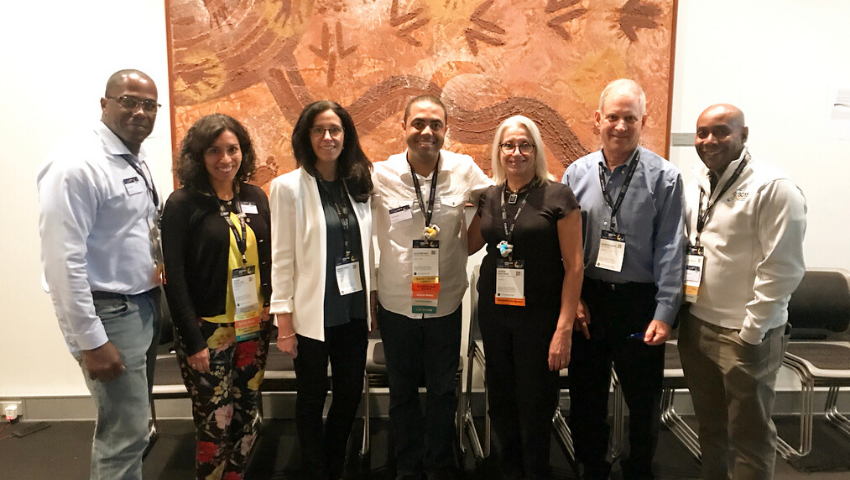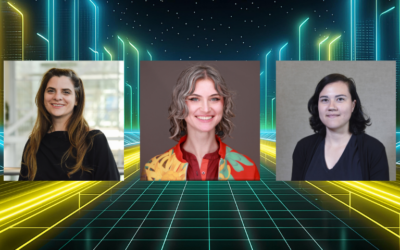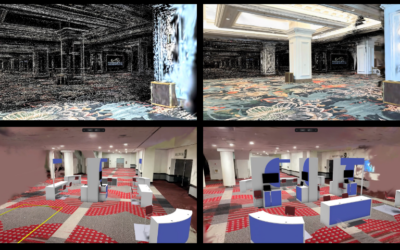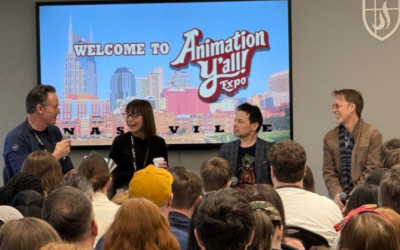© Alex Bryant
For the first time at the SIGGRAPH Asia conference — hosted in Brisbane, Australia, 17–22 November 2019 — the Diversity and Inclusion (D&I) Committee collaborated with the International Resources Committee for a series of sessions highlighting a variety of topics in computer graphics and interactive techniques, bringing together diversity, inclusion, and belonging. We asked a few of the International Resources Committee speakers about the significance of their involvement and how these initiatives are impacting the SIGGRAPH community and beyond.
The Impact of Diversity and Inclusion

Maggie Oh © SIGGRAPH Asia
“I was so honored to speak at SIGGRAPH Asia this year! I feel that it’s so important to bring diversity and inclusion topics to the forefront of an international technology conference, not only to showcase people’s personal experiences and viewpoints, but also to create a dialogue that transcends beyond the timeline of the conference. I appreciated hearing other people’s stories and welcomed everyone’s different perspectives. I learned further about my own biases and lenses, and I’m looking forward to growing with you to build a more diverse, equitable, and inclusive industry.” — Maggie Oh (Google), Speaker, SIGGRAPH Asia 2019: An Atypical Career Path: Film to Games to AR to R&D — How Engineering & Art Enhance Each Other Session
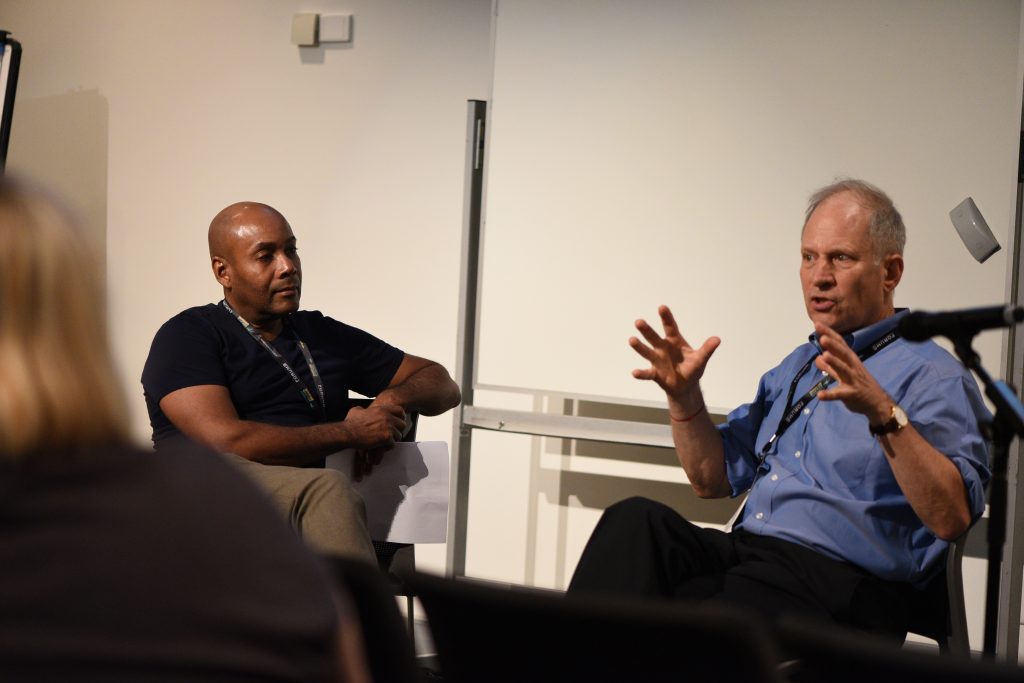
From left: Tony Baylis and Duncan Smith © SIGGRAPH Asia
“SIGGRAPH Asia’s 2019 diversity and inclusion sessions provided a unique and important opportunity to share experiences and perspectives on D&I with professionals from the U.S., Aboriginal Australia, Indonesia, China, Mexico, Venezuela, Australia, Peru, Germany, and more. These sorts of sessions are essential to developing a truly global approach to D&I that helps the people and organizations SIGGRAPH represents navigate the dynamics between national cultures, the organization’s culture, and their own personal culture and values.
To be successful, we all need to work better — across countries, within our organization, and in teams. I commend SIGGRAPH’s D&I Committee for creating the opportunity for conference participants to work with their experiences, questions, issues, and problems, and to increase their capacity to work well together and around the Asia-Pacific region and around the world.” — Duncan Smith (Diversity and Inclusion Expert), Speaker, SIGGRAPH Asia 2019: Diversity and Inclusion in the Asia-Pacific — Why and What? and Diversity and Inclusion in the Asia-Pacific — How?
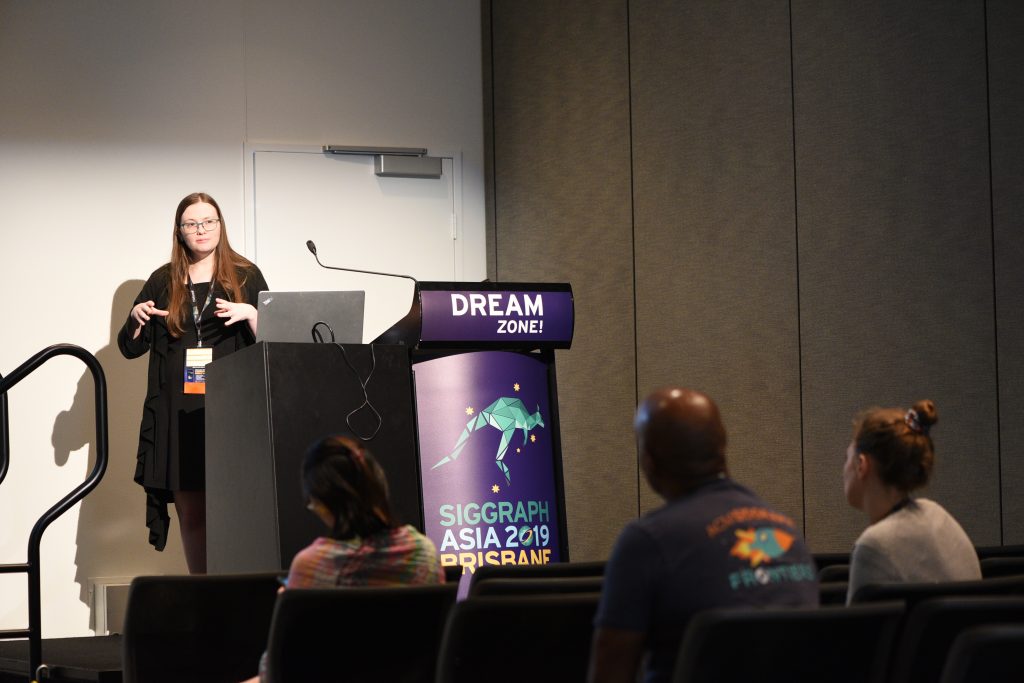
Dr. Jessica Korte © SIGGRAPH Asia
“SIGGRAPH’s diversity and inclusion sessions help shape the SIGGRAPH community by foregrounding the needs and perspectives of groups who would otherwise be overlooked. One SIGGRAPH Asia attendee remarked to me how pleased he was to see the diversity and inclusion sessions in the program and how important the issues being discussed were.
As an academic from HCI, rather than a graphical field, I personally really appreciated the opportunity to speak to a new audience and raise awareness of Deaf children’s needs and potential co-design ability as an end user group. Considering Deaf people’s main communication styles are visual, I hope more of the SIGGRAPH community will consider them as an important user group.” — Dr. Jessica Korte (The University of Queensland, Australia), Speaker, SIGGRAPH Asia 2019:The Impacts of Cultural and Individual Deafness on Collaborative Design With Deaf Children

Tony Baylis © SIGGRAPH Asia
“ACM SIGGRAPH wants to showcase and share information around the topics of diversity and inclusion that represents our global community. The presentations and great group of speakers at the SIGGRAPH Asia 2019 conference will continue to raise awareness, educate, and inform the attendees.” — Tony Baylis (ACM SIGGRAPH Diversity and Inclusion Chair, Office of Strategic Diversity and Inclusion Programs Director), Speaker, SIGGRAPH Asia 2019
Featured International Resources Committee Sessions
Review the descriptions of featured sessions from SIGGRAPH Asia 2019:
SIGGRAPH Asia for Beginners
Speakers: Tomasz Bednarz (UNSW Art & Design YT Lee, NTU, Singapore), Miho Aoki (UAF, United States of America), Norbert Drage (Curtain University, Australia), and AJ Christensen (The National Center for Supercomputing Applications, University of Illinois at Urbana-Champaign)
Description: Is this your first SIGGRAPH Asia? Are you lost with so many amazing sessions from which to choose? Don’t know where to start? We can help. Come with us to discover SIGGRAPH Asia together.
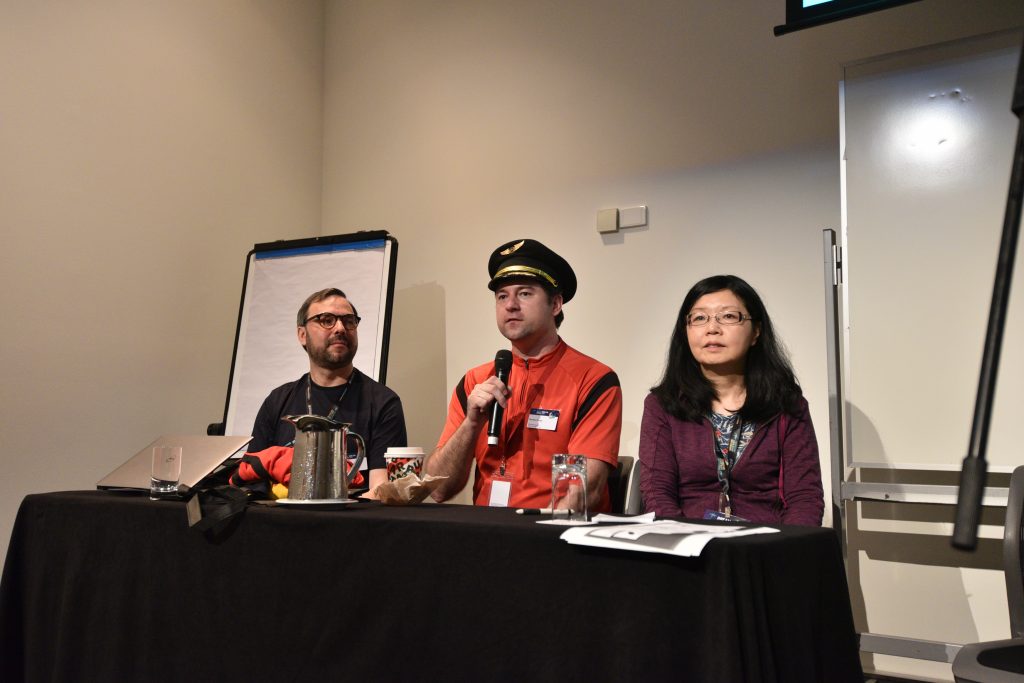
© SIGGRAPH Asia
Research Opportunities in Australia and New Zealand
Speakers: Mark Billinghurst (The University of Auckland, Australia), Andrew Johnson (UTS/Animal Logic Academy), Jan Kruse (Auckland University of Technology), Trish FitzSimons (Griffith University), and June Kim (UNSW/USYD)
Description: Are you interested in pursuing PhD studies or looking for postdoctoral opportunities in Australia and New Zealand? Gain insight into the areas of research conducted at Australian and New Zealand institutes.
VFX Training Opportunities in Australia and New Zealand
Speakers: Susan Danta (AFTRS), Kevin Philips (Youbee), Damien Schneider (JMC), and Andrew Johnson (UTS/Animal Logic Academy, Animal Logic)
Description: Are you planning to study VFX, animation, and film in Australia and New Zealand? We have organized a session to meet representatives from leading institutes in Australia and New Zealand.
ACM SIGGRAPH: Understanding and Volunteering
Speakers: Brian Wyvill, Mark Billinghurst, Sue Gollifer, AJ Christensen, Miho Aoki, Tony Baylis, Corinne Price, and Alex Bryant
Description: What is ACM SIGGRAPH? What is the difference between ACM SIGGRAPH and the SIGGRAPH Conferences? How does this organization run? Who is sitting at the wheel? Do you want to volunteer for ACM SIGGRAPH? This session will allow you to meet a number of ACM SIGGRAPH representatives, including the former Vice President of ACM SIGGRAPH and both current and former chairs of the Chapters, Communication and Membership, Education, Diversity and Inclusion, and Immersive and Interactive Committees.
Diversity and Inclusion in the Asia-Pacific — Why and What?
Speakers: Duncan Smith and Tony Baylis
Description: Tony Baylis, ACM SIGGRAPH Diversity and Inclusion Committee Chair, moderates a conversation with leading Asia-Pacific D&I practitioner Duncan Smith. Tony and Duncan will then facilitate a group discussion and Q&A, focusing on participants’ specific questions, issues, and problems. Come prepared with a story — a puzzling experience, a wonderfully successful experience, something you’re working through at the moment, or something you anticipate having to deal with in the future. As a group, attendees will bring multiple perspectives to bear on finding solutions.
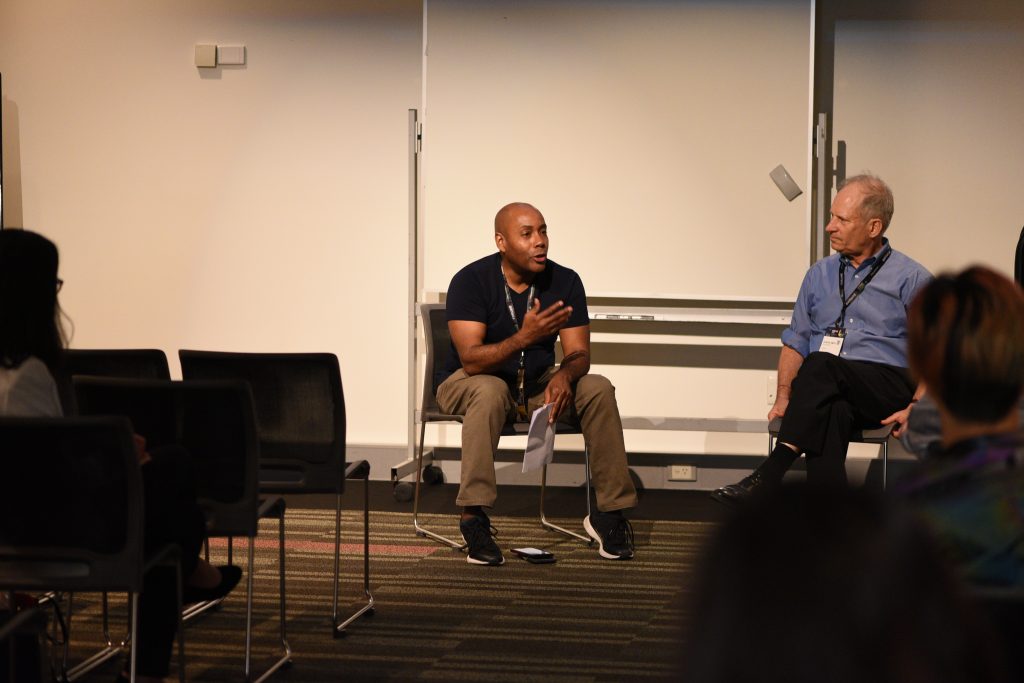
From left: Tony Baylis and Duncan Smith © SIGGRAPH Asia
Unconscious Bias @ Work
Speaker: Andrea Sosa Pintos (CSIRO Manufacturing)
Description: Mitigating Unconscious Bias @ Work is an introduction to the concept of unconscious bias and some practical tips to manage those biases. The session is aimed at raising awareness of how unconscious biases work, and how they can negatively influence workplace and team interactions. Awareness is an important first step in mitigating unconscious bias and giving our first thoughts a second look.
Diversity and Inclusion in the Asia-Pacific — How?
Speakers: Duncan Smith and Tony Baylis
Description: During the session, participants will identify their own and their organization’s approaches to D&I and assess both where their organization is in relation to best practice and where they most need to focus. The GDIB assessment will be augmented and enhanced by examples from Duncan Smith’s 30-year global career in D&I.

© SIGGRAPH Asia
Co-Design — Interdisciplinary Team Work for Usable Design Solutions
Speakers: Marie Bodén (The University of Queensland, Australia)
Description: Good design solutions most often come from teams that have diverse perspectives and skill sets. Though working in interdisciplinary or multidisciplinary teams is not always easy, it requires patience and great communication. Although every discipline has its perspective on what is most important in a collaborative process, it is easy to lose track of what the actual users may need or even of the end goal.
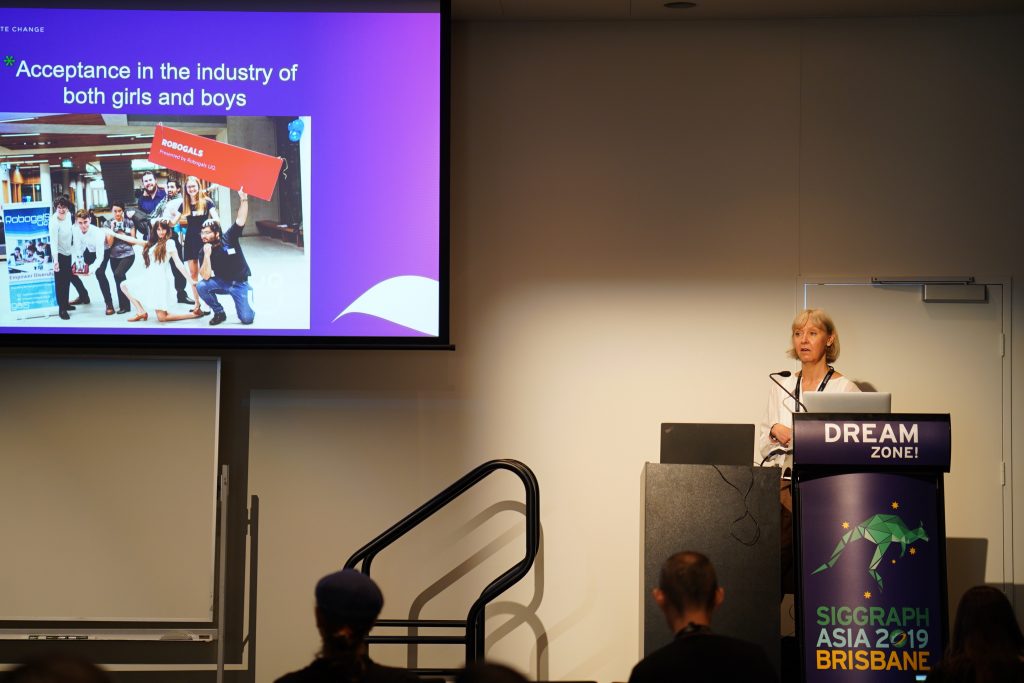
Marie Bodén © SIGGRAPH Asia
Rendering Gender
Speaker: Daniel Pillis (Virginia Tech Institute for Creativity, Arts, and Technology)
This presentation will encompass an overview of interdisciplinary research, connecting significant moments in the history of computing with an analysis of the gender constructs and cultural conditions in which they arose. By tracking a lineage of the representation of the human form in digital culture, the evolution of digital humans can be seen in parallel and in conflict with changing cultural norms surrounding gender categories, queer representational strategies, and established constructs of masculine and feminine identity.
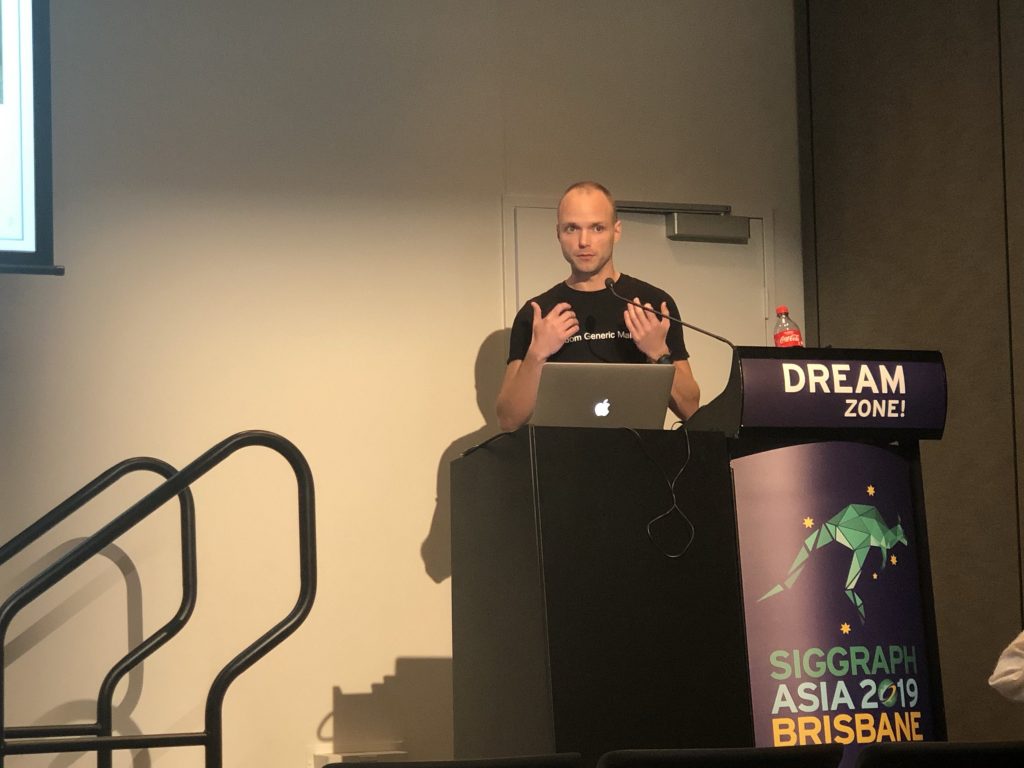
Daniel Pillis © Alex Bryant
The Impacts of Cultural and Individual Deafness on Collaborative Design With Deaf Children
Speaker: Dr. Jessica Korte (The University of Queensland, Australia)
When designing technology with and for young Deaf children, interactions will be influenced by both features of Deaf culture and individual features of Deafness. A holistic approach is needed, which addresses and accommodates Deaf culture, individual Deafness, and the youth and language acquisition level of the children involved.
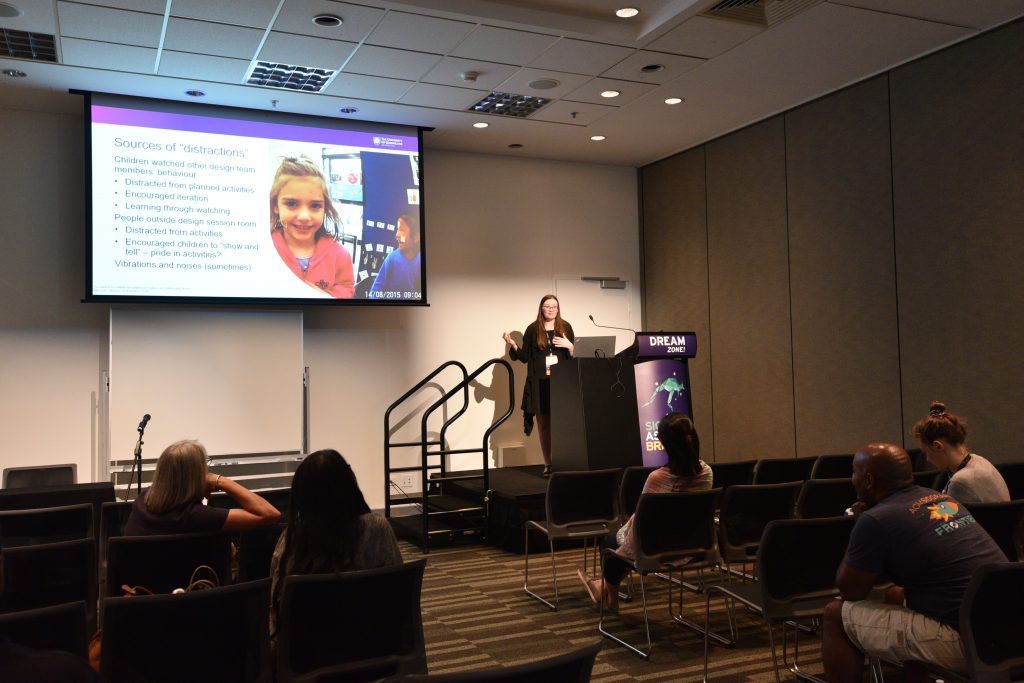
Dr. Jessica Korte © SIGGRAPH Asia
Indigenist Technology Co-Design and Co-Development — With, For, and About Aboriginal and Torres Strait Islander Peoples, Their Countries, Cultures, and Knowledges
Speaker: Susan Beeton (The University of Queensland, Australia)
Indigenist technology co-design and co-development (ITCD2) turns the lens on technology research, design, and development. ITCD2 is an approach to decolonizing existing technology design and development. This approach facilitates a process for all researchers, designers, and developers to critically analyze their own methods and biases. It does so by scaffolding the understandings of those biases derived within the contexts of social, institutional, and political dimensions that impact Aboriginal and Torres Strait Islander peoples’ lives in Australia.

Susan Beeton © SIGGRAPH Asia
An Atypical Career Path: Film to Games to AR to R&D — How Engineering and Art Enhance Each Other
Speaker: Maggie Oh (Google)
Learn the career journey of Maggie Oh, who will cover how her career in various art and engineering roles has allowed her to be fulfilled in games, film VFX, AR, and R&D. She’ll go over how she forged her own career track; how to build a supportive network along the way; and how being aware of the glass cliff is the first step to avoiding it in the first place.
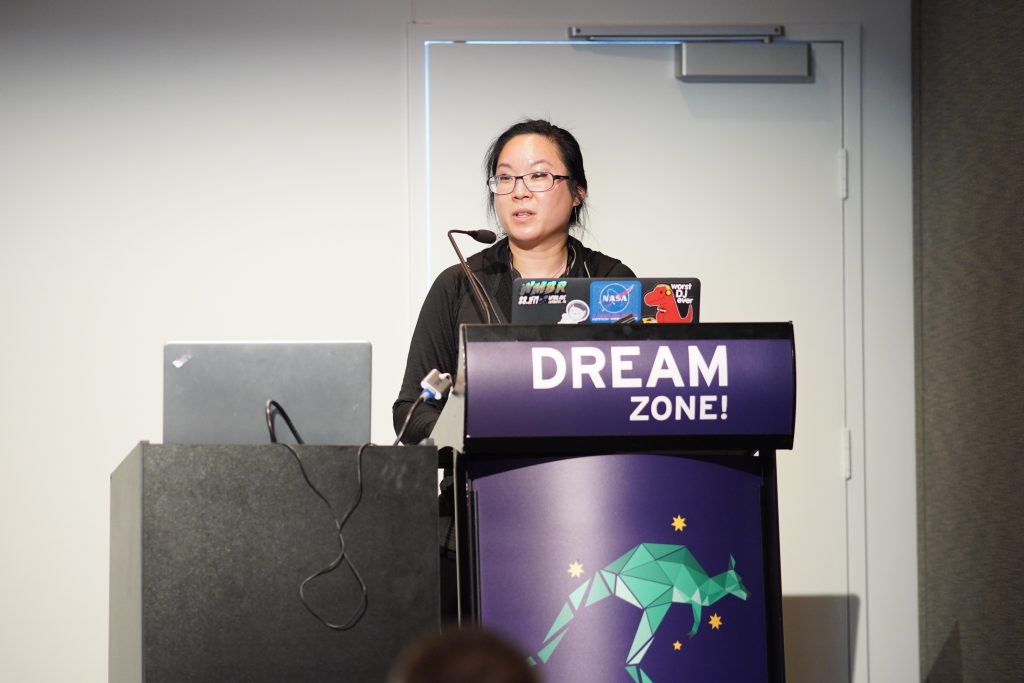
Maggie Oh © SIGGRAPH Asia
Town Hall With ACM SIGGRAPH Diversity and Inclusion Committee
Speakers: Tony Baylis, Diana Arellano, Lynn Villafuerte, Alex Bryant, Kevin Griffin, June Kim, and Daniel Pillis
ACM SIGGRAPH has formed a committee focused on diversity, equity, inclusion, leadership, and accountability. We want to show how a range of cultures, backgrounds, and disciplines demonstrate how diversity in our community makes us stronger and more inclusive. We invite you to provide your feedback on the pressing issues and relevant topics facing the computer graphics and interactive techniques community. Share your thoughts with the community here.
Learn more about ACM SIGGRAPH’s commitment to diversity and inclusion here. For more information about ACM SIGGRAPH’s International Resource Center, click here.
